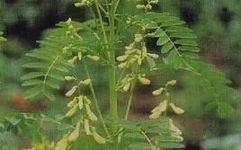 Astragalus Encyclopedia
Astragalus Encyclopedia
【Source】Root of the leguminous herbaceous plants Mongolian Astragalus (Huang Qi) and Membranous Astragalus.
【Related Names】Huang Qi, Mu Qi, Mian Huang Qi, Wang Sun, Jian Qi, Dai San, Dai Shen, Du Shen, Ji Cao, Shu Zhi, Bai Ben, Bai Yao Mian, Du Gen.
【Taste and Properties】Sweet, slightly warm. Enters the Lung and Spleen meridians.
【Characteristics】Astragalus is sweet and warm, primarily used to tonify the Qi and can also eliminate water pathogens. It is effective in tonifying the Middle Qi, lifting the clear Yang, tonifying Lung Qi, benefiting the Wei Qi to secure the exterior, and can also expel toxins, promote diuresis, and reduce swelling. By tonifying Qi, it can also generate blood, control bleeding, generate fluids, and relieve stagnation, treating conditions such as blood deficiency with sallow complexion, Qi not holding blood leading to bleeding, thirst due to both Qi and fluid deficiency, and numbness and paralysis due to Qi deficiency and blood stagnation.
【Functions】Tonifies Qi and lifts Yang, secures the exterior and stops sweating, promotes diuresis and reduces swelling, generates fluids and nourishes blood, relieves stagnation and alleviates pain, expels toxins and promotes healing.
【Indicationsfor Conditions】
1. Spleen and Stomach Qi deficiency, Spleen and Lung Qi deficiency, sinking of Middle Qi, Qi not holding blood, Qi deficiency with fever.
2. Spontaneous sweating, night sweats.
3. Abscesses and sores that do not heal due to insufficient Qi and blood.
4. Qi deficiency with edema, difficulty in urination.
5. Dual deficiency of Qi and blood, blood deficiency with sallow complexion, blood stasis causing limb numbness, hemiplegia, and thirst.
【Dosage and Administration】9–30g. For tonifying Qi and lifting Yang, it is best to use honey-fried; otherwise, it is used raw.
【Precautions】Astragalus is sweet and warm, which can easily assist in generating fire and restraining pathogens. Therefore, it is not suitable for those with excess exterior pathogens, Qi stagnation with damp obstruction, food accumulation, Yin deficiency with Yang excess, or severe toxic sores.
【Origin】Mainly produced in Shanxi, Heilongjiang, Inner Mongolia, and other provinces. The cultivated Mongolian Astragalus is of the best quality.
【Harvesting and Processing】Harvest in spring and autumn, cut off the root tips, remove the fibrous roots, and sun-dry until 60-70% dry, sorting by size, bundling, and then fully drying. The best quality has a thick root, yellow-white cross-section, sweet taste, and powdery texture.
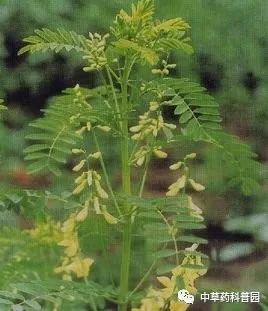
【Modern Pharmacological Research】
Astragalus contains triterpenoid saponins (Astragalus saponins), flavonoids, and polysaccharides; Astragalus polysaccharides have immune-promoting effects and can enhance immunity. Modern studies show that Astragalus has effects such as enhancing immunity, delaying aging, improving microcirculation, inhibiting platelet aggregation, lowering blood pressure, promoting hematopoiesis, regulating glucose metabolism, and protecting the liver.
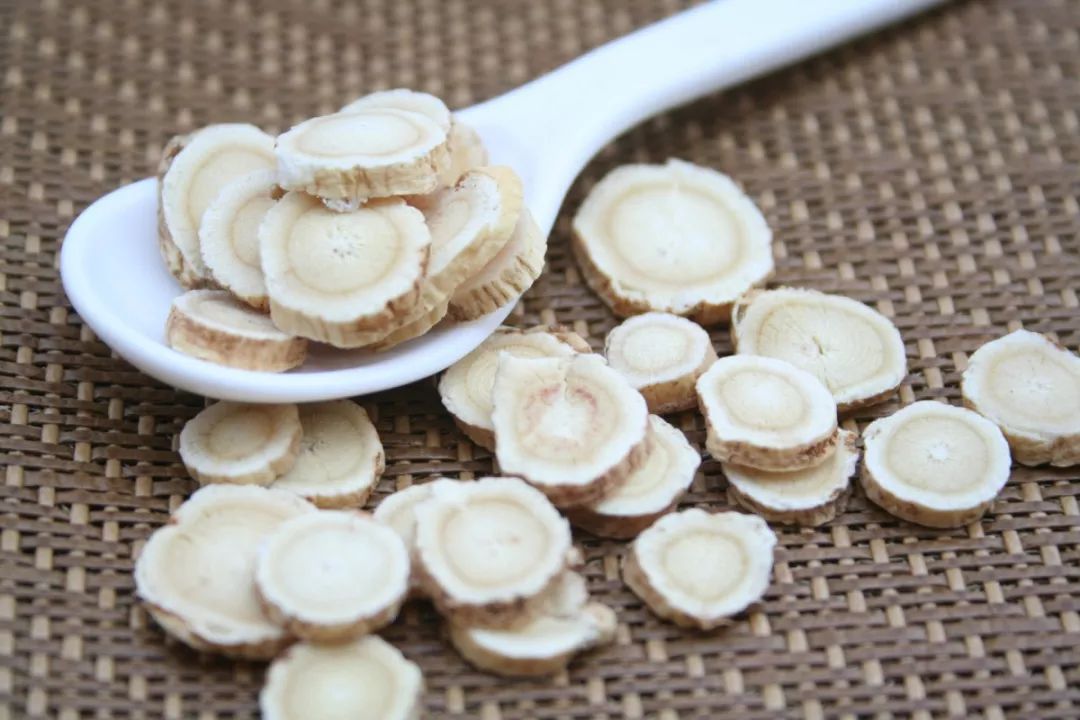
【Clinical Applicationsin Combination】
Astragalus is a key Qi-tonifying herb, widely used in clinical practice. Depending on the combination, it plays different roles in various formulas.
1. For palpitations and forgetfulness, insomnia with vivid dreams, spontaneous sweating or night sweats
Astragalus combined with Bai Zhu (White Atractylodes), Fu Shen (Poria with Host), Longan flesh, fried Jujube seeds, Dang Shen (Codonopsis), Mu Xiang (Aucklandia), honey-fried Licorice, Dang Gui (Angelica), Yuan Zhi (Polygala), fresh Ginger, and Red Dates forms the “Gui Pi Decoction.” This can tonify the Spleen and nourish the Heart, benefiting Qi and blood, effectively treating palpitations and forgetfulness due to excessive thinking, fatigue of the Heart and Spleen, and deficiency of both.
2. For shortness of breath, palpitations, heaviness in the limbs, and lower back pain
Astragalus combined with Bai Shao (White Peony), Dang Gui, Chen Pi (Tangerine Peel), Rou Gui (Cinnamon), Ren Shen (Ginseng), Bai Zhu, honey-fried Licorice, Shu Di Huang (Rehmannia), Wu Wei Zi (Schisandra), Fu Ling (Poria), Yuan Zhi, fresh Ginger, and Da Zao (Jujube) forms the “Ren Shen Yang Rong Decoction,” which can tonify Qi and nourish the Heart, treating shortness of breath and palpitations due to Qi deficiency and fatigue.
3. For Spleen and Stomach Qi deficiency, and organ prolapse due to Qi deficiency
Astragalus combined with Ren Shen, Bai Zhu, Licorice, Dang Gui, Chen Pi, Sheng Ma (Cimicifuga), and Chai Hu (Bupleurum) forms the “Bu Zhong Yi Qi Decoction.” This can tonify the Middle Qi, lift the sinking Qi, and is effective for treating organ prolapse due to Qi deficiency.
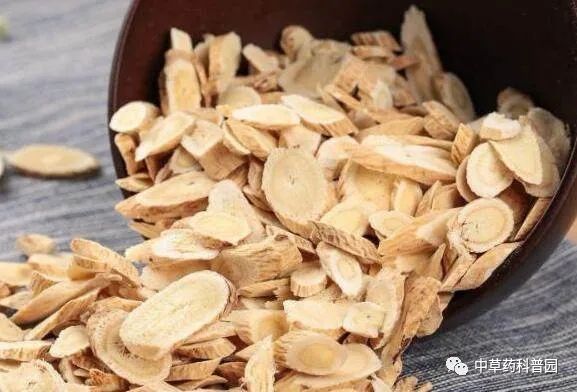
 Astragalus Dietary Recipes
Astragalus Dietary Recipes
Astragalus has many benefits for the body, and we can utilize it in our daily diet to nourish the body.
1. Tea: 2g of Western Ginseng, 5g of Astragalus, 3 pitted Red Dates, 20 Goji Berries, and 6 Rose Buds. Place in a pot or health pot, add water, boil, and after 5 minutes, it can be consumed as tea. It can regulate Qi and blood, soothe the liver, reduce fat, and beautify the skin, especially effective for women with menstrual irregularities. Pregnant women should avoid it.
2. Soup: 9g of Ejiao (Donkey-hide Gel, melted), 5g of Astragalus, 3g of Dang Gui, 5g of Hawthorn, half a black chicken, and 100g of lean meat. Clean and cut the black chicken and lean meat into pieces, blanch in water, then place in a stewing pot with other ingredients, add appropriate water, and steam for 1-2 hours. After serving the soup, add the melted Ejiao for consumption. This can nourish Yin, tonify Qi, and stimulate appetite.
3. Porridge: Take 20g of Astragalus and 30g of Red Dates, add water and simmer for 30 minutes, then add washed rice and cook until the porridge thickens. This can tonify Qi and nourish blood.
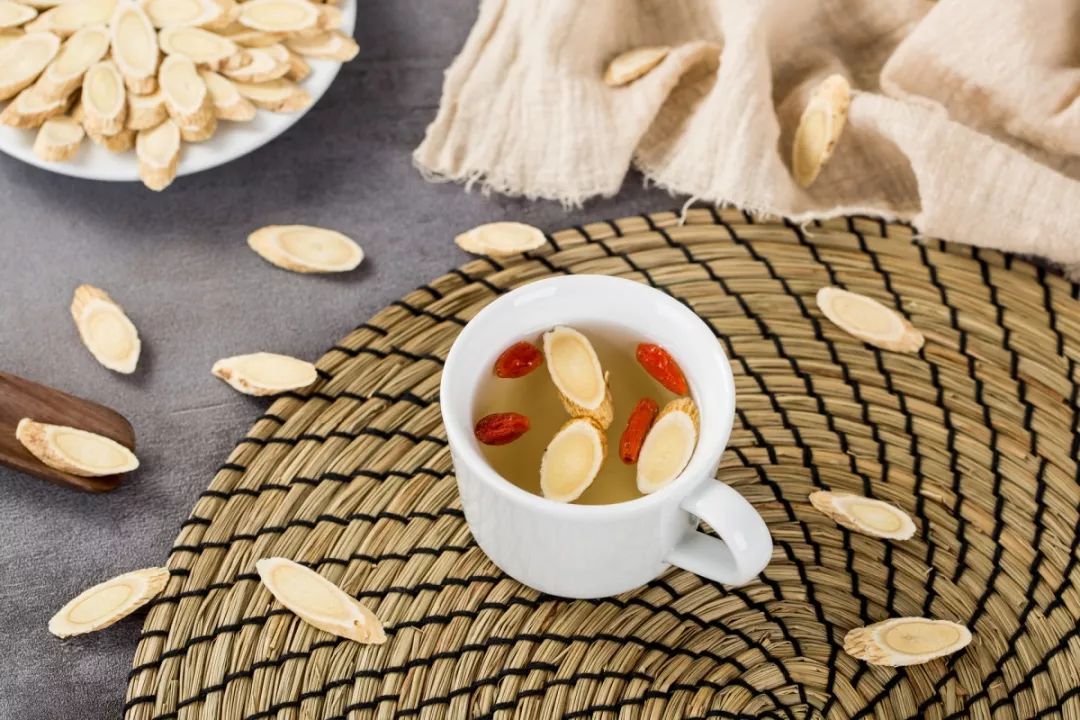
 A Little Story of Astragalus
A Little Story of Astragalus
It is said that in ancient times, there was a kind-hearted old TCM doctor named Dai San, who was skilled in acupuncture, was honest, humble, and devoted his life to helping others.
One day, the old man went up the mountain to gather herbs and passed by a cliff, when he heard a woman crying for help at the edge of the cliff. It turned out that her child was caught by a small tree, hanging over the cliff. Due to recent rain, the soil was loose, and the tree could fall at any moment.
The old man put down his herb basket and carefully approached the child. He comforted the child not to be afraid while getting closer.
The old man, barefoot in the mud, carefully made his way to the child, first supporting the child and slowly handing him to the woman. Just as the child was successfully rescued, the old man lost his footing and fell off the cliff.
People found the old man’s body at the bottom of the cliff and buried him at the edge of the cliff. On the day of his burial, a medicinal herb sprouted beside the grave. No one recognized this herb, and due to its thin shape and pale yellow color, people named it “Huang Qi” in respect, meaning the old man who was thin and pale, thus naming this herb “Astragalus.”
Astragalus was first recorded in the “Shen Nong Ben Cao Jing,” and was anciently written as “Huang Qi.” Li Shizhen in the “Ben Cao Gang Mu” explained its name as follows: “Qi means long, Huang Qi is yellow, being the best among tonifying herbs, hence the name.”
According to the “New Tang History: Biography of Xu Yinzong,” Xu Yinzong, when he first took the position of military advisor in Xincai, the Empress Dowager suffered a stroke, unable to speak, and her pulse was deep and undetectable. Xu Yinzong, proficient in medicine, knew that the Empress Dowager had deficient Yang Qi and obstructed Qi and blood, and sometimes could not even take medicine. He used Astragalus and Fang Feng to decoct a lot of hot soup, placing it under the bed to fumigate her mouth and nose and skin. The imperial physicians followed suit, and the room was filled with medicinal aroma for a day and night, and gradually the Empress Dowager woke up and could speak, eventually recovering.

